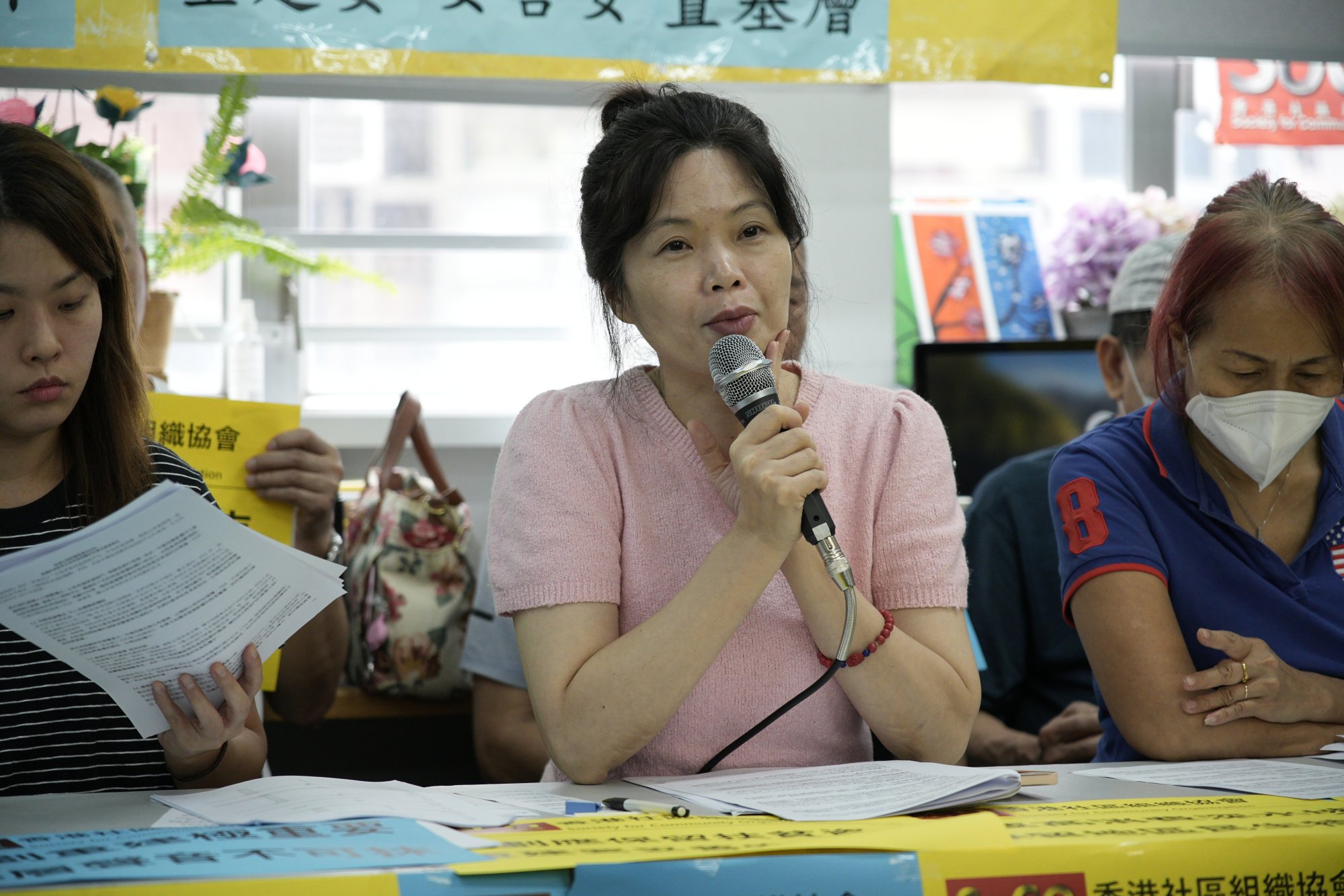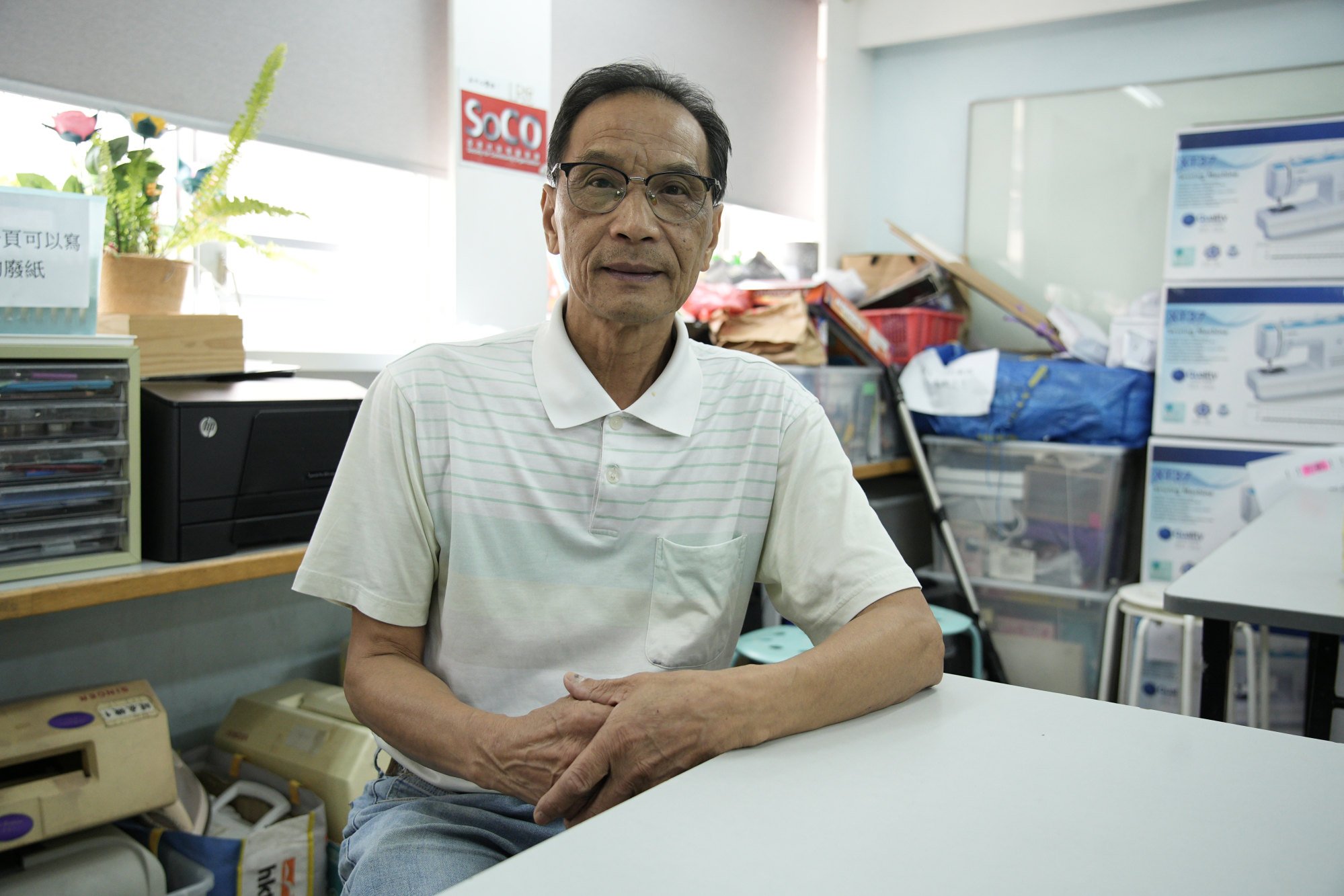[ad_1]
More than three out of four residents in Hong Kong’s second-poorest district have called for improvements to hygiene and structural safety among buildings in the area, a survey has found.
The Society for Community Organisation (SoCO) said the poll results published on Sunday also showed that less than 7 per cent of residents in Sham Shui Po were satisfied with government inspection efforts after the city witnessed multiple incidents of debris falling from ageing buildings in recent months.
“A lot of residents complained that the old buildings where they live have a lot of issues, where landlords only know how to collect rent, with issues such as water leakages or structural issues not being handled by them,” said Sze Lai-shan, the organisation’s deputy director.
The NGO interviewed 303 people living in the district, aged 18 to 82, and found that 89.8 per cent of them lived in some form of subdivided housing, such as cage homes and cubicle flats.
Hong Kong’s old buildings are crumbling. Why aren’t they being repaired?
Hong Kong’s old buildings are crumbling. Why aren’t they being repaired?
Government figures showed Sham Shui Po was Hong Kong’s second-poorest district after Kwun Tong, with the median household monthly income in 2022 for the former standing at HK$22,280 (US$2,848).
The Urban Renewal Authority, a profit-making statutory body, earlier this year began collecting public views on building conditions in Sham Shui Po, potentially paving the way for large-scale redevelopment of the district.
The survey from Sunday also asked residents to list out their top concerns, with 79.5 per cent picking poor hygiene, while building safety and population density were ranked high by 75.2 per cent and 65.2 per cent of interviewees.
The data showed 48.8 per cent of respondents were dissatisfied with building inspection efforts by the government. Only 6.9 per cent said they were satisfied.

Appearing at SoCO’s media briefing on Sunday, an elderly man surnamed Wong said he was almost struck on the head last year when a piece of concrete fell from the ceiling of the subdivided flat he was staying in.
“Sleeping in the middle of the night, then suddenly there was a foot-long piece of concrete that came falling down,” the 68-year-old said.
“It was lucky that I had a small platform [above my bed] that stopped the piece of concrete. It was several inches thick. Without the small platform, the piece would have crushed my head.”
Wong said he had moved out of the flat over concerns the incident could happen again and currently lived in a house made of sheet metal on top of another building.

SoCO’s Sze urged authorities to establish a cross-departmental task force to coordinate building inspections and ensure high-risk structures complied with mandatory measures, as well as handle any resulting prosecutions.
The government should also increase penalties and the extent to which homeowners could be held criminally liable for breaches of building safety regulations, she said.
The Post previously found that there were at least 24 incidents of debris falling from old buildings between July and August. The spate of resulting accidents has also renewed public debate on how to deal with the city’s ageing structures.
Stiffer penalties urged as work orders neglected at 2,700 Hong Kong buildings
Stiffer penalties urged as work orders neglected at 2,700 Hong Kong buildings
As of May, 2,700 buildings had failed to complete mandatory inspections within their deadlines. The figure included 500 sites considered “three-nil”, meaning they lacked a property maintenance company, owners’ corporation or residents’ organisation.
Some 900 buildings among the larger figure had yet to appoint a registered inspector to carry out the necessary checks.
Since July, the Buildings Department has begun demanding that owners of such buildings report their progress, warning those who dragged their feet would face prosecution.
[ad_2]
Source link
